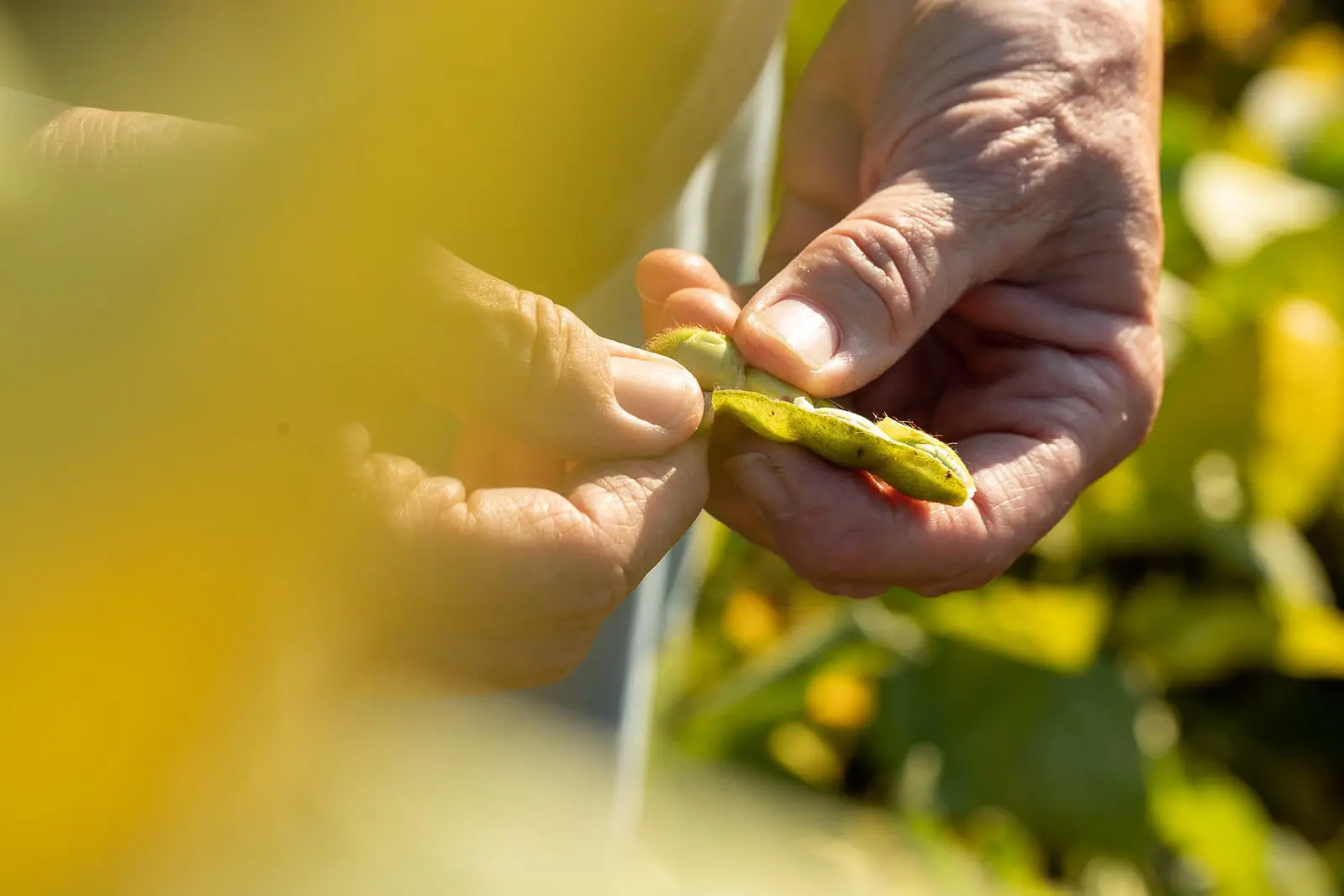Humans have been improving their food to suit their needs since farming began — planting only the tallest corn, the best gourds or the tastiest herb — selecting the best genes to make the best crops.
Progress has led to a sophisticated and streamlined process and amplified the benefits of gene-editing technologies. Everything starts with an idea. And then science steps in to show how it can work.
How It Starts
The soy checkoff initiated research to identify how advancements in gene editing can help farmers produce a better crop. Whether it’s through plant breeding, genetic engineering or genome editing, the research shows how the crop improvement process moves through the same basic steps.
With an end goal in mind, scientists begin by identifying desirable traits. They move to compile a pool of select genetic materials that may be functionally linked with these traits. Next, they characterize and select the genetic materials that express the traits to achieve a proof of concept.
Technicians then transfer and integrate the selected genetic materials that control the desired traits into one or a few working breeding lines of the target crop. They evaluate whether the introduced genes result in the desired traits without unwanted side effects.
Then, a few elite lines of crops move out of the lab to various locations for small-scale field trials. In this step, researchers determine if the added or removed genetic materials present the desired traits in more diverse genetic backgrounds and growing environments. Researchers also continue to monitor for unwanted side effects.
After small-scale trials, the best-performing crops are evaluated in a large-scale field trial. First tested across many geographies and production environments, the highest performing lines go on to pre-commercial testing and, ultimately, seed production and commercialization.
In all cases, the goal of genetic engineering remains to improve crop for a growing world.
On the Farm
Higher yield and greater quality are just the simplified end goals. Gene editing also has the potential to reduce the amount of inputs necessary, providing benefits for farmers. They could decrease water, land and pesticide usage — an appealing thought for Kentucky soybean farmer and United Soybean Board farmer-leader, Keith Tapp.
“What that can do for agriculture could be tremendous. It could be another tool in our toolbox. One we can use to help us be more productive and sustainable,” said Tapp.
Last year, Tapp attended CRISPRcon in the Netherlands. He met farmers of various forms of production from around the world that expressed their excitement for gene-editing technology. For example, Tapp met a group of fruit farmers excited about this technology’s potential to edit bananas and apples to not bruise as easily — a perk for producers, consumers and the supply chain in between.
“Farmers serve a twofold purpose. We do what we do because we love and enjoy it. But we’re also trying to make a living,” Tapp said. “We want to continue to supply the world with a safe and abundant amount of food.”
Tapp said adding gene-editing technologies would not only produce higher quality and quantity yields but give farmers more peace of mind.
“Mother Nature always influences everything in our realm,” he said. “But with gene-editing technologies, I think we’ll be able to sleep better knowing it would take something pretty big to affect our crop in the field.”
New technologies like gene editing can be hard to wrap your head around, whether you’re a farmer or a consumer. Tapp said the key is to be willing to learn and accept change.
“Education and understanding are very important for realizing where we are and where we’re heading with new technologies,” he said. “People should try to have an open mind, know the facts and study the facts.”
Just like those early farmers, today’s agriculture industry is always looking for improvements.
“We shouldn’t fear change because it’s the one thing that’s constant — in agriculture and the world,” said Tapp.
